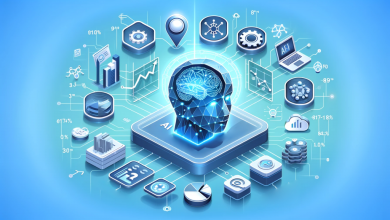SUSE – 2025 Tech Trend Predictions

By Vishal Ghariwala, Chief Technology Officer for SUSE Asia Pacific
The rapid evolution of technology continues to reshape industries across the Asia Pacific region. In 2025, organisations will face a complex landscape of emerging threats and opportunities. To thrive in this dynamic environment, businesses must prioritise digital resilience, security, and innovation.
Cloud-Native Observability: A Cornerstone of Digital Resilience
Customers in cloud-native environments often struggle with identifying and resolving issues quickly due to a lack of end-to-end visibility across their infrastructure and application stack, impacting service reliability and availability. In 2025, we can expect customers to double down on cloud-native observability so that they are able to visualise and correlate events and metrics in real-time, from the infrastructure to the application across their hybrid and multicloud environments. This will enable them to analyse data across their entire environment, and identify patterns, anomalies and potential issues before they escalate into incidents.
Strengthening Digital Resilience Against Outages
In 2024, we witnessed major tech outages at the regional and global stage e.g. the Crowdstrike global outage. The outage trend is expected to continue and this will lead to companies putting in place IT strategies to withstand, adapt and recover from such outages. Examples of such strategies may include mitigating software concentration and vendor lock-in by diversifying the IT stack, building alternative tech stacks for failover scenarios, and adopting a multivendor approach that provides choice for critical infrastructure software, such as operating systems and Kubernetes.
Zero-Trust Security: A Shield Against Ransomware
Ransomware attacks have increased dramatically in 2024 and we can only anticipate this trend will persist as bad actors employ increasingly sophisticated attacks powered by AI. The availability of Ransomware-as-a-Service (RaaS) operators exacerbates the situation. In 2025, more companies are expected to invest in zero-trust security solutions capable of detecting and preventing attacks such as ransomware as well as other zero-day exploits.
Secure and Private GenAI: Powering Innovation Responsibly
Companies adopting AI technologies face numerous security challenges, including GenAI privacy and data protection concerns, as well as vulnerabilities within the AI supply chain. To address these risks, the adoption of private AI platforms is set to grow. These platforms can empower companies with full control over their data, safeguarding their operations against increasing threats such as unauthorised data sharing, regulatory non-compliance, and the proliferation of “shadow AI” usage.
AI Observability: Optimising Performance and Reducing Carbon Footprint
AI, particularly large language models, requires substantial amounts of energy to operate. This has a significant impact on CO2 emissions. To optimise the energy consumption of their AI workloads and reduce CO2 emissions, companies will be adopting a range of strategies in the coming years. These include fine-tuning and optimising LLMs, eliminating performance bottlenecks in LLMs, selecting energy-efficient cloud providers, and scaling AI resources responsibly. Observability tools will be instrumental in enabling and guiding these efforts.
A Standard Operating Environment for AI: Driving Efficiency and Innovation
There are multiple options available today to run GenAI and other types of AI workloads. Over time, we can expect most companies to create a standard operating environment for AI use cases. Such an environment will comprise a common AI platform that is highly scalable and provides common modules and services required by AI workloads such as a curated set of LLMs, data privacy and security, observability etc. A standard operating environment also ensures consistent governance, efficient workflows, and optimised resource usage, thereby contributing to reduced CO2 emissions.
As we move into 2025 and beyond, organisations that prioritise digital resilience, security, and innovation will be well-positioned to capitalise on emerging opportunities and navigate the challenges of the digital age.




